A Rebel by Any Other Name…
–shazbazzar
Since the inception of Star Wars, names have been significant to the saga’s story lines. From subtle hints about origins to conveying more obvious character qualities, the names, and changes in names, are selected to expedite the audience’s understanding of the storyteller’s vision. For example, Deak Starkiller from the early story treatments became Luke Skywalker in the final script — a name that maintains the potential power of the character without the burden of the negative connotation inherent in the word killer. Han Solo’s surname gave us immediate insight into the smuggler as a loner who relied on himself for his success (or failure). During the three years between the releases of The Empire Strikes Back and Return of the Jedi, many fans made a connection (although, in this case, an unintended connection) to Darth Vader’s claim to be the father of Luke Skywalker based on an interpretation of Darth Vader as Dark Father, based on variations of the word father in German and Dutch. Star Wars Rebels continues in this rich heritage of nomenclature with the names of its characters, both heroes and villains.
Gall Trayvis
In a recent episode of Star Wars Rebels, the self-proclaimed “Sena tor-in-Exile” betrayed our heroic band of Rebels by luring them into a trap on Lothal. When his betrayal was fully revealed in “Vision of Hope”, what was expected by some as far back as “Rise of the Old Masters” was proven: Gall Trayvis was an agent of the Empire, tasked with drawing out insurgents who set themselves against the tyrannical government.
tor-in-Exile” betrayed our heroic band of Rebels by luring them into a trap on Lothal. When his betrayal was fully revealed in “Vision of Hope”, what was expected by some as far back as “Rise of the Old Masters” was proven: Gall Trayvis was an agent of the Empire, tasked with drawing out insurgents who set themselves against the tyrannical government.
As the closing credits of “Vision of Hope” rolled, I noticed something about Brent Spiner’s character that I had failed to realize previously — the spelling of his name included part of the word betrayal. Gall Trayvis had the gall to pretend to fight the Emperor’s tyranny while intentionally bringing the wrath of the Empire down upon small cells on various systems. His bitter deception had been foreshadowed in his own name, a hint to observant fans of the new animated series. After realizing this, I wondered what other clues the storytellers have hidden in their characters’ names. Below are my thoughts about the names of the members of the crew of the Ghost in Star Wars Rebels.
Hera Syndulla
Home
This one seems rather obvious to fans of Star Wars: The Clone Wars, since Cham Syndulla was a freedom fighter of the Twi’lek people in the opening episodes of the third season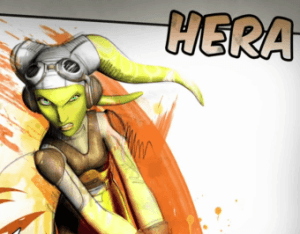 of the series. Most fans quickly made that connection, amplified by unconfirmed reports that she is the niece of the famed hero of Ryloth. But perhaps more interesting to her role in Rebels is her namesake, the Greek goddess Hera.
of the series. Most fans quickly made that connection, amplified by unconfirmed reports that she is the niece of the famed hero of Ryloth. But perhaps more interesting to her role in Rebels is her namesake, the Greek goddess Hera.
Hera is the goddess of love and marriage in Greek mythology. She is seen as the protector of the home and family, especially in nurturing and providing for children under their mother’s care. As the captain and pilot of the Ghost, Hera manages her “household” by seeing to their care and growth while under her protective wing. Early in the series, Hera convinces Kanan of his responsibility to train Ezra, repeatedly reminding him of his need to begin the boy’s training.
Hera is the mother figure of the crew of the Ghost. She will both protect and push her “family” to rise to reach their potential, as individuals and as a collective unit.
Sabine Wren
Heart
The young, artistic explosives-expert of the Ghost’s crew shares her surname with a character in the upcoming Star Wars sequel, The Force Awakens, as well as with a Cularin senator whose history is checkered with accusations of CIS sympathies as well as incidents of graffiti on warehouse walls (see Senator Levina Wren). Whether Sabine has any co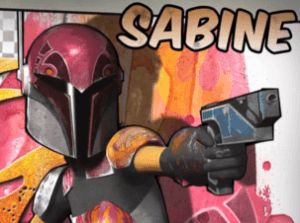 nnection to either of these characters is unknown at this point, but with the young Mandalorian’s penchant for artistic explosions and at a hint that her family was negatively affected by the Empire, some significant connection is plausible.
nnection to either of these characters is unknown at this point, but with the young Mandalorian’s penchant for artistic explosions and at a hint that her family was negatively affected by the Empire, some significant connection is plausible.
Her given name, however, is rife with meaning — both historically and colloquially. The Sabine women of Italy are credited with aiding the creation of ancient Rome according to folklore passed down over the centuries. Long before the Sabines were subdued by Roman forces in the third century, the fortitude of Sabine women was recognized and prized, first by the republic and later by the empire. In certain circles, the term Sabine is used to describe a lovable girl who is artistically gifted, quick-witted with a tendency towards biting humor, and fiercely loyal. While a “Sabine” may be difficult to get to know, she is worth making the effort.
With these characteristics, it is little wonder that Sabine has already captured the heart of young Ezra Bridger. However, Sabine is certainly not cast as a simple love interest, but as the very heart of the crew. Her fiery disposition pumps energy through the rest of the team.
Ezra Bridger
Hope
In a recent interview with Jimmy Mac, writer Henry Gilroy somewhat inadvertently voiced what many already felt to be the case in Rebels, that this series which seems to be told from Ezra’s perspective, bridges the gap between Revenge of the Sith and A New Hope (consult RebelForce Radio “2.20.2015”). Ezra, whose birth coincided with the birth of the Empire (Star Wars Rebels “Empire Day”), provides a new generation of Star Wars fans with insight into the times and circumstances of the original trilogy characters as he introduces Luke, Han, and Leia to the fourth generation of viewers just in time for the seventh movie in the ongoing saga.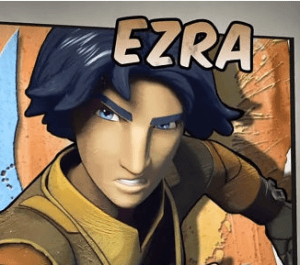
The selection of Ezra as his common name may stem from the Biblical character who is credited by students of the Old Testament with restoring the Israelites to their former status by reminding them of the original covenant they had with their God through Moses after they had fallen into captivity because of their failure to faithfully adhere to the statutes of the Law as handed down at Mount Sinai. The Biblical Ezra called his people to return to the Law of Moses by teaching publicly, reorganizing the canonical books and psalms into their commonly accepted order, and possibly even penning the books of 1 & 2 Chronicles as a history of the nation of Israel with a focus on faithfulness with the intention of preparing the people for the culmination of their history through the long-awaited Messiah who would usher in a new hope for the world through the people of Israel.
As such, Ezra connects Star Wars of the past, both the original and prequel trilogies, with Star Wars of the future in a story that centers on the hope for a brighter future based on the promises and prophecies of the “Messianic Age” of the Force.
C1-10P (a.k.a. “Chopper”)
Human Nature
To put it briefly, and bluntly, Chopper is the “cut-up” of the crew of the Ghost. As Dave Filoni  described him when introducing him on StarWars.com, “If Artoo is the family dog, Chopper is the cat.” Although an essential member of the team, Chopper’s actions at any given moment is solely focused on doing things his way. His muffled murmurings are patently snide, likely filled with cut-downs, and eschew an amiable grumpiness in the ‘droid who serves the group in a way that best pleases him (perhaps to satisfy some deeply-ingrained sense of self-importance — something unexpected in a unit designed to serve its creators). In a way, Chopper continues in the Star Wars tradition of making ‘droids the most human of the characters of the saga). Maybe most of us are more like Chopper than any other single member of the crew.
described him when introducing him on StarWars.com, “If Artoo is the family dog, Chopper is the cat.” Although an essential member of the team, Chopper’s actions at any given moment is solely focused on doing things his way. His muffled murmurings are patently snide, likely filled with cut-downs, and eschew an amiable grumpiness in the ‘droid who serves the group in a way that best pleases him (perhaps to satisfy some deeply-ingrained sense of self-importance — something unexpected in a unit designed to serve its creators). In a way, Chopper continues in the Star Wars tradition of making ‘droids the most human of the characters of the saga). Maybe most of us are more like Chopper than any other single member of the crew.
Garazeb Orrelios
Hulk
I have absolutely no idea where Zeb gets his name. His is the least recognizable name among 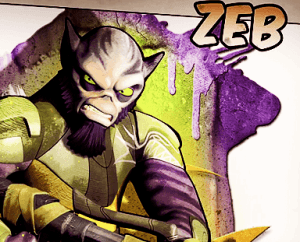 all the characters in the series. Zeb embodies strength and loyalty combined with a childish mindset that enables him to connect with Ezra like a big brother in the “family unit” on board the Ghost. Not known for his intellectual aptitude, Zeb is at his best when bashing Stormtroopers or teasing his mates. A combination of Wookiee and gecko, his agile strength provides Rebels with a unique character that rounds out this small band of freedom fighters.
all the characters in the series. Zeb embodies strength and loyalty combined with a childish mindset that enables him to connect with Ezra like a big brother in the “family unit” on board the Ghost. Not known for his intellectual aptitude, Zeb is at his best when bashing Stormtroopers or teasing his mates. A combination of Wookiee and gecko, his agile strength provides Rebels with a unique character that rounds out this small band of freedom fighters.
Kanan Jarrus (Caleb Dume)
Help
Kanan’s name may have the most complex and intriguing origin of all members of the crew of the Ghost. First introduced to Star Wars fans as a padawan in the Jedi Temple before the Purge, Kanan was formerly known as Caleb Dume (see A New Dawn).
Another name derived from Hebrew Scriptures, Caleb was one of twelve spies sent into the land of Canaan to determine how the Israelites would conquer the land God had promised to them through Abraham. Of all the spies, only Caleb and Joshua returned with an optimistic appraisal of their situation. Even against seemingly insurmountable odds, with fortified cities and giant inhabitants, Caleb tried to rally the army of Israel to invade the land promised to them, saying, “Let us go up at once and occupy it, for we are well able to overcome it,” (Numbers 13.30). However, due to the people’s lack of faith, God prevented Israel from entering the land for another forty years. In the end, of all the soldiers of that generation, only Caleb and Joshua were permitted to enter the land when those forty years of wandering ended. At the age of eighty-five, Caleb led the attack on the city of Hebron, trusting that even in his old age, God would give him the strength to conquer the giants before him.
Even as a padawan, Caleb embodied the same “can do” attitude of his namesake, recognizing the possibility of using the Jedi homecoming signal to warn Jedi away from Coruscant in case of immanent danger. Once Order 66 had been issued, Obi-Wan Kenobi put Caleb’s idea to use, sending out the signal to all Jedi about their betrayal by the Emperor and ch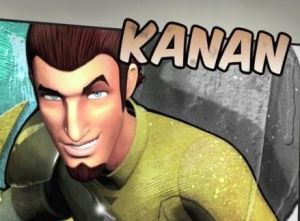 arging them to conceal themselves in exile for an unspecified period of time. It was at that point that Caleb became Kanan (a homophonous reference to the land the Biblical Caleb was assured he could conquer with supernatural assistance).
arging them to conceal themselves in exile for an unspecified period of time. It was at that point that Caleb became Kanan (a homophonous reference to the land the Biblical Caleb was assured he could conquer with supernatural assistance).
Kanan spent the years after Order 66 distancing himself from the Jedi Order, not merely assuming a new name, but casting off many lingering vestiges of the Jedi Code and avoiding using his Force abilities, and specifically his lightsaber, for fear of drawing attention to himself. When Star Wars Rebels premiered with the hour-long televised movie, Spark of Rebellion, Kanan revealed himself as a Jedi by brandishing his lightsaber in the battle to release a group of Wookiees from slavery and allowing his crew mates to escape the Imperial forces converging on their position. His reemergence as a Jedi permitted Yoda to “see” him again, as the Jedi Master stated while Kanan meditated in the Temple on Lothal (“Path of the Jedi”).
As the Biblical Caleb was of the princely tribe of Judah, a tribe from which the greatest leaders of Israel would arise, Kanan is recognized by his team as a leader, especially by Hera herself, who conveyed her trust in his leadership when she confided in Sabine that “Kanan…he knows what he’s doing,” (“Out of Darkness”). Kanan’s renewed trust in the Force that moved him to take on a padawan, even while doubting his own qualifications for doing so, reveal himself to the Empire’s agents set on destruction of the Jedi, and self-sacrifice in staving off the Inquisitor and Tarkin to enable his friends’ escape (“Call to Action”) will eventually result in Kanan taking the lead in allying his team with other Rebel cells, bringing about the emergence of the Rebel Alliance.
Kanan emulates the help this small band of Rebels needs if they are going to survive against the growing Galactic Empire and eventually bring about the fall of Palpatine’s tyrannical rule.
…Would Smell as Free.
While there are other names in this animated series that suit their characters well — Kallus is truly a calloused individual and it seems that much of the rebellion hinges on the mysterious character known as “Fulcrum” — the evidence that the names of the main heroes of this series fit their personas is a testimony to the depth of writing present in the conceptualization and realization of this addition to Star Wars canon. I, for one, am looking forward to more tributes to the mythos of Star Wars which has lent to its longevity throughout my lifetime. Certainly, “Star Wars is forever!”
Author: shazbazzar
Stuart Tullis (shazbazzar) has been enamored with Star Wars since first seeing it at the drive-in with his family. The original trilogy dominated his youth until the Dark Times removed the toys from the stores in the mid-eighties. Rediscovering Star Wars at Mississippi State University with a housemate’s copy of Heir to the Empire, he has enjoyed the saga through toys, games, costumes, cartoons, TV specials, and books. Currently, he preaches for the Honeysuckle Road church in Dothan, Alabama where he lives with his wife, daughter, and son — two of which are avid Star Wars fans as well (his wife happily tolerates their fandom with a wink and a nudge). He is an active band parent who is always thrilled to hear the music of John Williams played by high school bands on the field and in concert halls. He is the co-host of TechnoRetro Dads on RetroZap.com. Follow shazbazzar on Twitter.
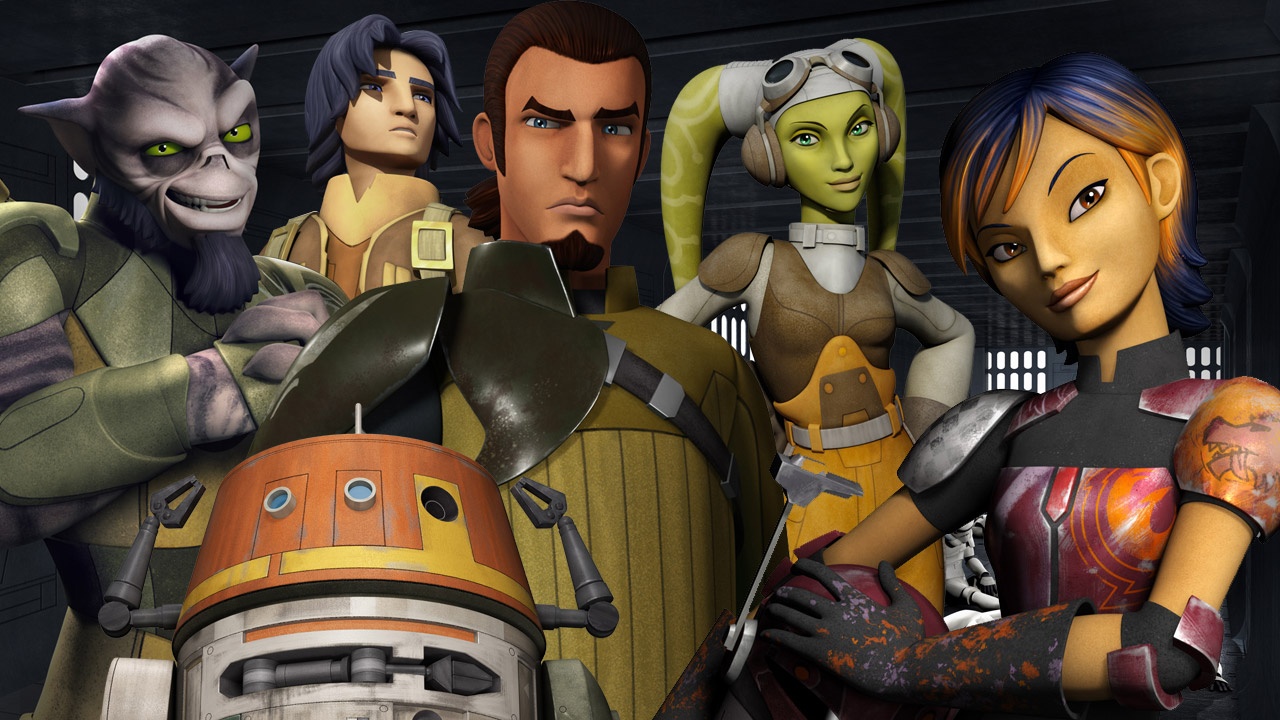
I was aware that Ezra and Kanan’s names were probably biblical in nature and I felt it gave weight to their names, without knowing the actual backstory of their Old Testament namesakes. The same could be said with Luke, really. You may not realize unless you have knowledge of the bible that Luke is one of the authors of the New Testament but the name still conveys a certain seriousness, certainly a name of historical importance, that is, it’s an old name.
Very good article, I learned a lot!
I like it when character names describe the characters themselves. I always linked Greedo to being greedy; after all, he wanted a cash reward. Thanks for the comments. Lucas had a history of delving into the realm of religion for names of people and places. Padme is part of a meditative chant. I wonder where “Sheev” originated…